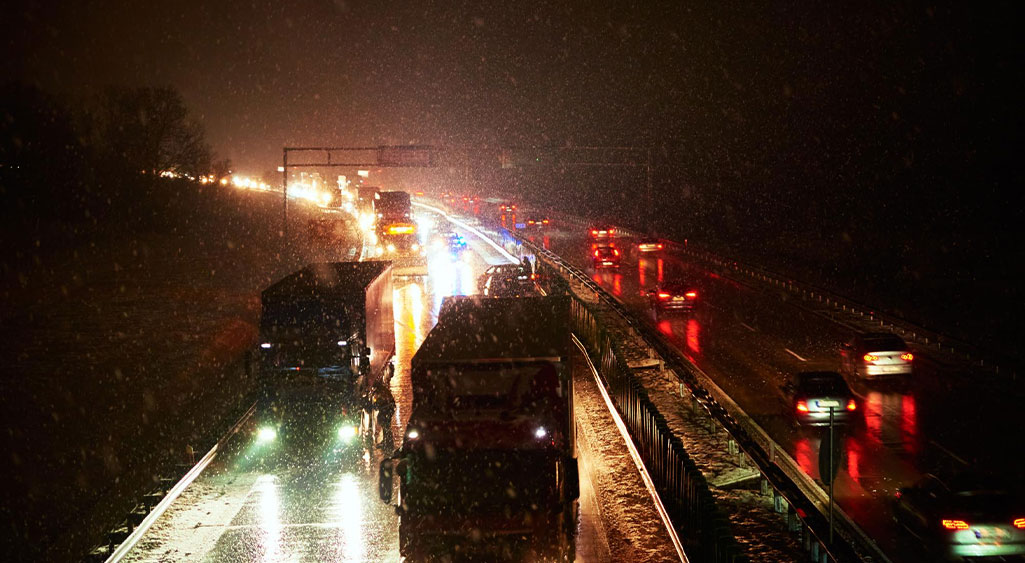
 Request FREE consultation - 1866-758-4529
Request FREE consultation - 1866-758-4529 
In the state of Texas, approximately 39,000 accidents involving commercial trucks, also known as semis, occur each year. Among the various factors contributing to these incidents, truck accidents and roadway lighting play a significant role. About 1800 of these accidents result in serious injuries. Additionally, between 550 and 650 people die in traffic collisions involving big rigs each year.
Some different tactics are being explored to reduce the number of accidents involving commercial trucks in Texas and across the United States. One strategy that can reduce the number of 18-wheeler accidents is to install more roadway lighting and improve the existing lighting on streets and highways.
75% of miles driven in Texas, and elsewhere in the United States, occur during daylight hours. Only 25% of driving happens in the darkness of night. Notably, the nighttime fatality rate is three times higher than that during the daytime. Accidents involving serious injuries spike upwards at a similar rate on dark, nighttime roadways.
Operating a big rig truck, or any other type of motor vehicle, is primarily a visual task. Lack of light significantly diminishes a driver’s ability to identify roadway obstacles, observe other drivers, and operate a vehicle, including a commercial truck, in the safest possible manner.
The U.S. Department of Labor has compiled studies that highlight the significant safety benefits associated with installing or improving lighting on roadways. These studies report that the addition of lighting on highways can reduce collisions by up to 50%.
Additionally, these studies suggest that the incidence of fatal accidents is reduced by almost half with the installation of improved lighting on highways.
These studies have been conducted not only in the United States but also in other countries worldwide. The results have been similar, all showing a reduction in accidents when roadway lighting is in place.
There do exist other strategies that can be employed to reduce the incidence of nighttime accidents involving commercial trucks. These include everything from actual road design alterations to enhanced driver monitoring.
Ultimately, the addition of roadway lighting proves to be the most cost-effective alternative.
For example, road reconstruction and reconfiguration are highly costly. The net effect of this type of effort does not yield the same reduction in collisions as does lighting installation, which itself is significantly less expensive.
Enhanced monitoring of drivers might prove cheaper than installing lights. However, the reduction in collisions through this type of effort does not rise to the level of what is achieved through roadway lighting.
Call the trucking accident attorney in Houston, Texas, for your free injury accident consultation.
Resources:
https://safety.fhwa.dot.gov/roadway_dept/night_visib/lighting_handbook/#fig1a
Related Resources: